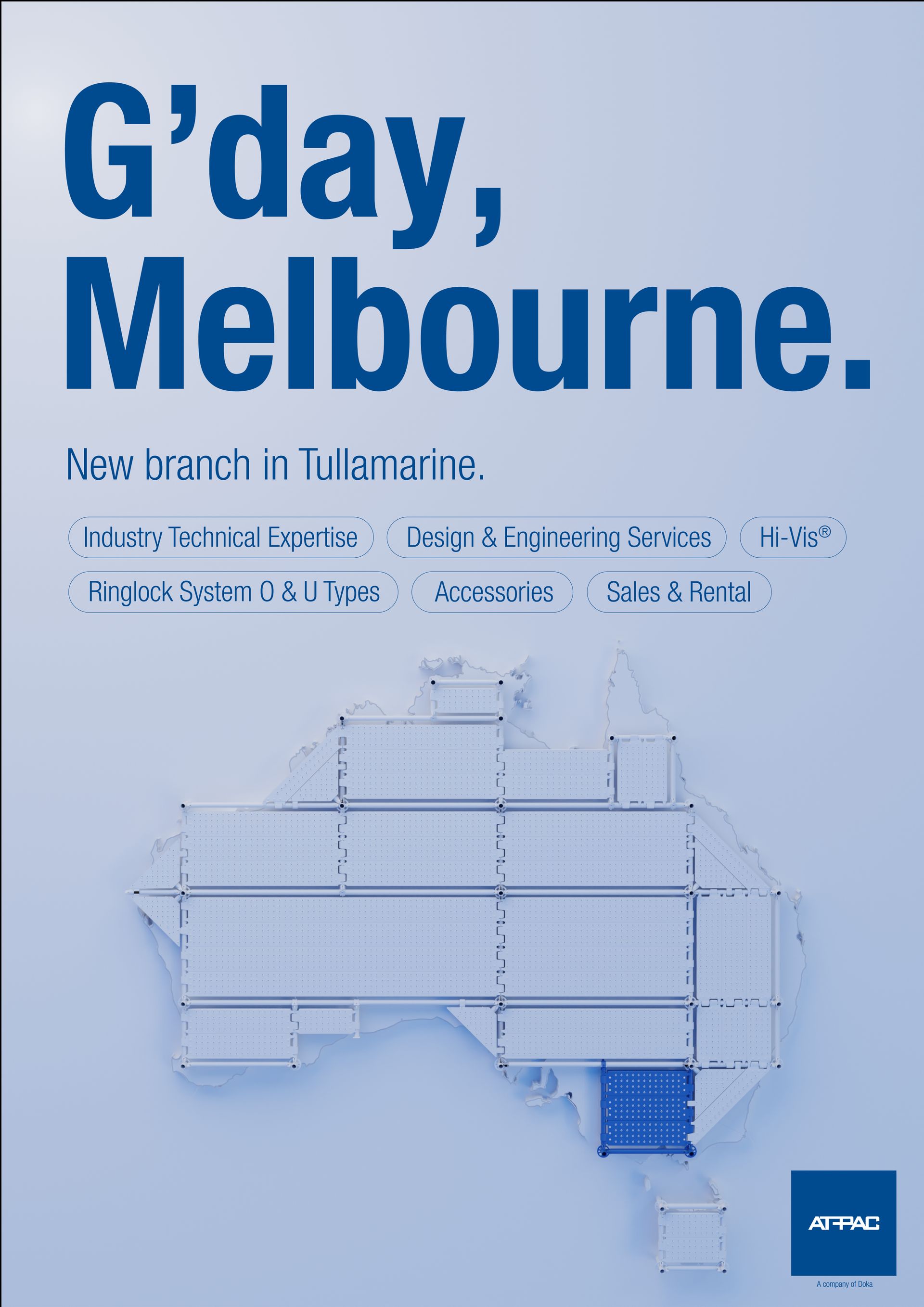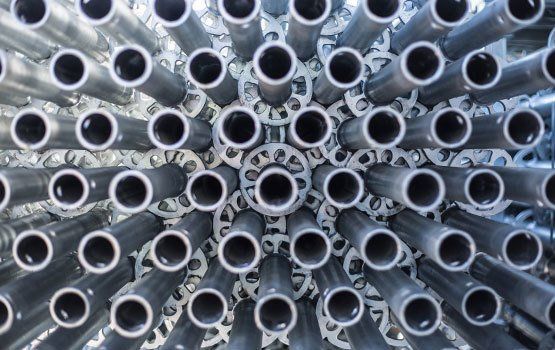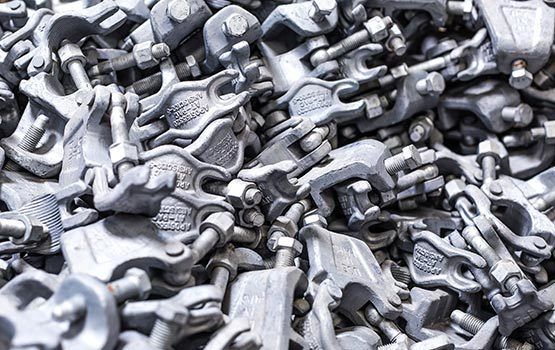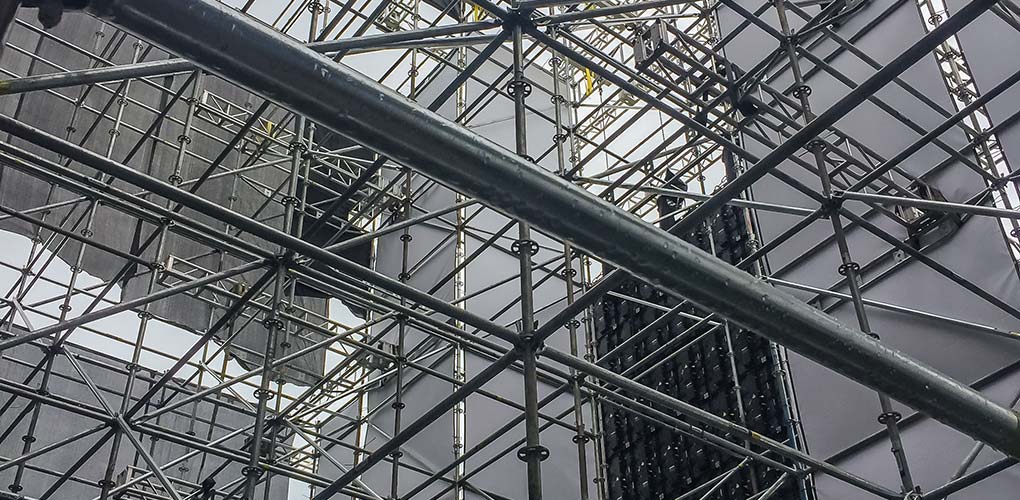Scaffolding Parts and Accessories | Maintenance | AT-PAC
- Confirm that all scaffolding components are in place and secure: Wedges, bolts, nuts, spigots… even the smallest component must be present and secure to ensure safety.
- Look for cracks, dents and splits in steel or wooden panels: The floor panels of your scaffolding must bear a lot of weight and withstand heavy objects dropped from above. Even a small weakness in one of these surfaces can spell trouble as these heavy forces are exerted during the job.
- Look for sharp edges: Steel and aluminum often develop burrs and lips, which can lead to cuts and scratches not uncommon to heavy construction work. Noticing and fixing sharp edges is a good step toward preventing infections, bumps, bruises, and even avoiding more serious issues like hospitalization.
- Look for any deflection or bends in equipment (due to overloading): This is especially important at weight-bearing supports and flooring panels that have taken on especially heavy loads. If the metal is already bending under the strain, continued traffic and jarring makes it only a matter of when — not if — it will break.
- Check to ensure nuts on clamps and braces move freely: All scaffolding parts and accessories that are intended to move or be adjustable must be properly lubricated and routinely worked to keep them fully functional. Proper maintenance improves safety and avoids slowdowns during the job.
- Replace all missing/removed spigots with the correct bolt and lock nut: There is no room for cob-jobbing or making do with subpar replacement parts when your workers’ health and safety are on the line. Invest in manufacturer-approved replacement parts only.
- Ensure swing gate springs are functioning: Again, this is a seemingly small and simple maintenance item, but it adds another level of safety at every point in the scaffolding design where a safety barrier exists.
You might also like
AT-PAC Blog

Navigation
Global Support Office
Atlantic Pacific Equipment LLC
1455 Old Alabama Road Ste. 100
Roswell, GA 30076 USA
AT-PAC Global Regions
-
North America
Houston (North America Main Office)
11821 East Freeway
Suite 550
Houston, Texas 77029
Atlanta, Georgia (Southeastern Branch Office)
1356 Cobb Industrial Dr
Marietta, Georgia 30066
Baton Rouge, Louisiana (Gulf Coast Branch Office)
2179 Commercial Drive
Port Allen, Louisiana 70767
Columbus, Ohio (Midwestern & Northeastern Branch Office)
2565 Harding Hwy E
Marion, Ohio 43302
Denver, Colorado (Mountain West Branch Office)
8780 E 93rd Pl
Henderson, Colorado 80640
720.736.4625
La Porte, Texas (Southwestern Branch Office)
1606 Sens Road
La Porte, Texas 77571
Los Angeles, California (West Coast Branch Office)
22990 Temescal Canyon Road
Corona, California 92883
Edmonton, Alberta (Canada Main Office)
6215 82nd Avenue
Edmonton, Alberta T6B 0E8
-
Australia
56 Windsor Road
Wangara, WA 6065
153 Rossmann’s Road
Stapylton, Queensland 4207
21 Gladstone-Benaraby Rd,
Gladstone, Queensland 4680
11 Huntingwood Dr,
Huntingwood NSW 2148
85 Sharps Road,
Tullamarine, Victoria 3043
+61 497 960 608
-
United Kingdom & Europe
Mossburn Avenue, Harthill
Lanarkshire, ML75NF
Unit 19, Park Rose Industrial Estate
Middlemore Road, Smethwick
West Bromwich
B66 2DZ
Europe
Gildestraat 14
6883 DB Velp,
The Netherlands
-
South America
Santiago, Chile (South America Main Office)
Avda. Miraflores 9700
Pudahuel, Santiago
Avda. Pedro Aguirre Cerda 14200,
Antofagasta, Chile
+56.55.2552762
Santa Cruz de la Sierra, Bolivia
Complejo Industrial Del Norte, Lote 35
Km 23, Carretera Warnes
Santa Cruz De La Sierra, Bolivia
Ventas Oriente +591.77270270, +591.75742858
Ventas Occidente/Centro +591.77312652
-
Asia
DISCLAIMER: The information contained in this website is provided by Atlantic Pacific Equipment, LLC (“AT-PAC”) and is for general information purposes only.
Disclaimer |
Terms |
Privacy
Atlantic Pacific Equipment (AT-PAC), LLC All Rights Reserved










